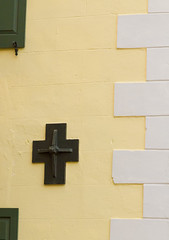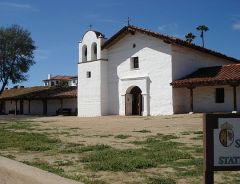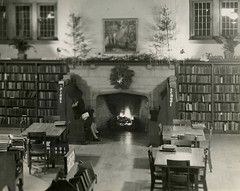![]()
![]()
![]()
Use LEFT and RIGHT arrow keys to navigate between flashcards;
Use UP and DOWN arrow keys to flip the card;
H to show hint;
A reads text to speech;
36 Cards in this Set
- Front
- Back
|
The Enlightenment |
18th century European movement in which thinkers attempted to apply the principles of reason and the scientific method to all aspects of life. Also known as Age of Reason. |
|
|
Neo-Palladianism |
architecture based on Palladio - strongly based on the symmetry, perspective and values of the formal classical temple architecture of the Ancient Greeksand Romans |
|
|
Georgian |
1700's to 1800's in English speaking countries taste for symmetry and proportion based on theclassical architecture of Greece andRome, as revived in Renaissance architecture. Ornament is also normally in the classical tradition, but typically rather restrained, and sometimes almost completely absent on the exterior |
|
|
Adamesque or Adam Style |
18th-century neoclassical style ofinterior design and architecture, as practised by three Scottish brothers usually ornamented in a singular uniform scheme |
|
|
Federal style |
classicizing architecture built in the newly founded United States between c. 1780 and 1830, and particularly from 1785 to 1815 |
|
|
quoin |

angle at the outside corner of a building |
|
|
Laws of the Indies 1573 |
more extensive set of rules for the building of towns and cities in the Americas |
|
|
atrio |
entrance hall lobby |
|
|
presidio |

Fort built in the southwest by Spanish |
|
|
Terrace housing |
houses that share wall, row housing |
|
|
circus |
roundabout |
|
|
Picturesque |
period where architects were concerned about the journey through landscape like a painting |
|
|
Romanticism |
artistic, literary, and intellectual movement that originated in Europe toward the end of the 18th century |
|
|
The Sublime |
Really excessive in emotions and symbolism meant to shock people |
|
|
Ecole Polytechnique |
French public institution of higher education and research |
|
|
Pullman Strike |
nationwide railroadstrike in the United States on May 11, 1894. It pitted the American Railway Union (ARU) against the Pullman Company |
|
|
Napoleon's Empire |
Nearly all of Europe except for Balkans |
|
|
Greek Revival |
architectural movement of the late 18th and early 19th centuries attempts to bring back Greek temple design to symbolize power |
|
|
Gothic Rival |
late 18th and 19th centuries movement attempting to bring back Gothic cathedral/church architecture |
|
|
Richardsonian Romanesque |
styleof Romanesque Revival architecturenamed after architect Henry Hobson Richardson |
|
|
Egyptian Revival |
architectural style that uses the motifs and imagery ofancient Egypt |
|
|
Round Arch style (Rundbogenstil) |
one of the nineteenth-century historic revival styles ofarchitecture, is a variety ofRomanesque revival popular in the German-speaking lands and the German diaspora |
|
|
Structural polychromy |
color is not applied after construction, but is provided by the brick, stones, or tiles used in the building. It was a feature of the matureGothic Revival |
|
|
Cast iron |
brittle alloy of iron and carbon that can be readily cast in a mold |
|
|
wrought iron |
low carbon content Wrought iron is tough, malleable, ductile, corrosion-resistant and easilywelded |
|
|
Structural rationalism |
architecture as a rational construction approach defined by the materials and purpose of the structure |
|
|
Arts and Crafts movement |
international movement in the decorative and fine arts that flourished in Europe and North America between 1880 and 1910 |
|
|
Inglenook |

Atraditional hearth configuration ofpartially enclosed space among Arts andCraftsmovement architects |
|
|
British East India Company |
trading company |
|
|
Indo-Saracenic style |
mesh of British and Indian archtitecture |
|
|
Mughal Empire |
derived from mongolians |
|
|
Great Chicago Fire 1871 |
destroyed roughly 3.3 square miles of Chicago, Illinois, and left more than 100,000 residents homeless |
|
|
Balloon Frame |
uses long continuous framing members (studs) that run from the sill plate to the top plate, with intermediate floor structures let into and nailed to them |
|
|
Cage building |
inspired by Filipino tensile frame to resist typhoons |
|
|
Frame building |
wood frame construction |
|
|
Curtain wall |
outer covering of a building in which the outer walls are non-structural, but merely keep the weather out and the occupants in |

